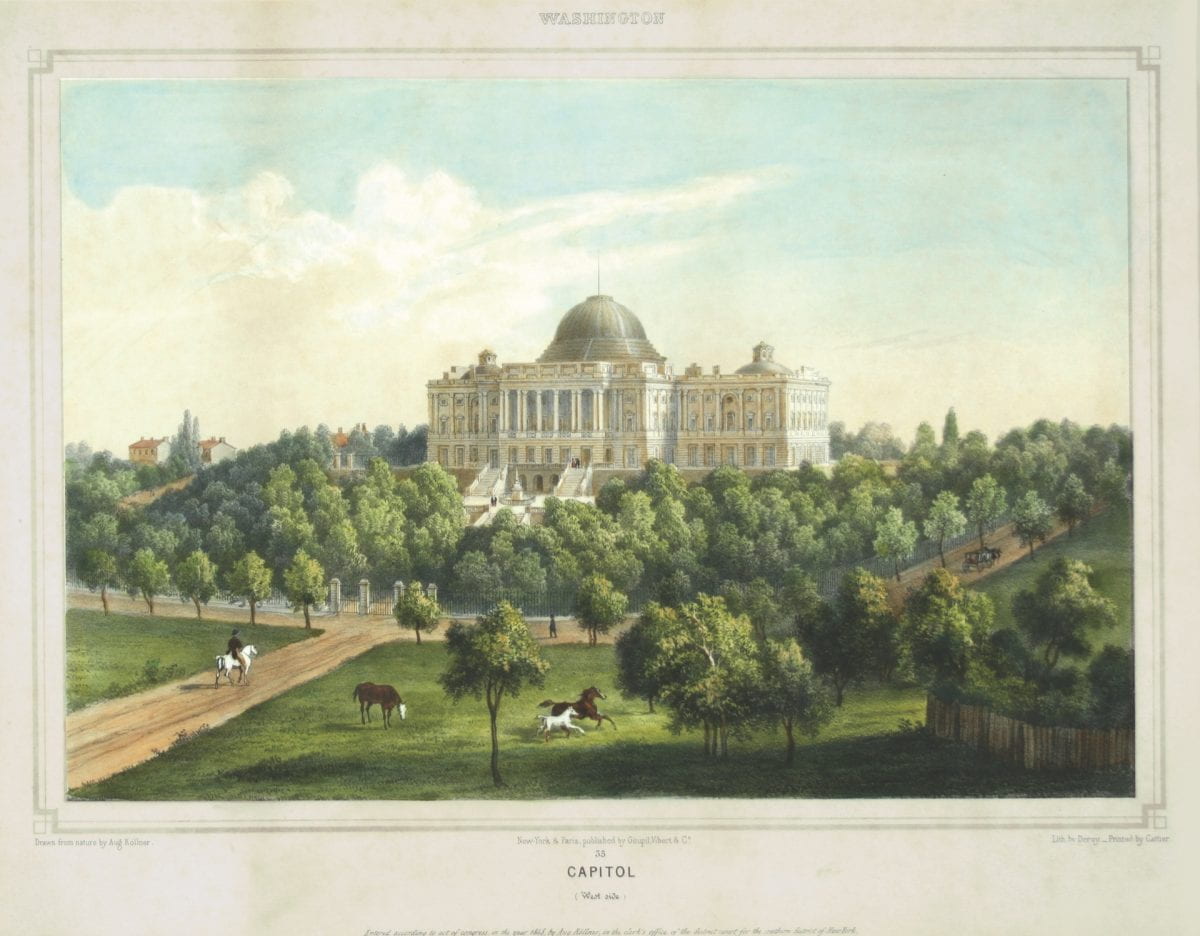By Alexander Cotnoir
M.A. ’22, Teaching and Museum Education
This colored lithograph by Augustus “August” Theodore Frederick Köllner depicts the west side of the U.S. Capitol in 1848 with row houses in the left background, people traveling by stagecoach and three horses roaming in the foreground. Born in Stuttgart, Germany in 1813, Köllner learned to draw at a very young age while working for a local engraver. After studying engraving, etching, and lithography in Paris, he sailed to the United States in 1839 in hopes of better employment. After struggling to make a living in Washington, D.C., as a portrait painter, he began creating scenic lithographs for printers in Philadelphia.
From 1848 to 1851, Köllner sketched scenes of numerous American and Canadian cities for the New York and Paris firm Goupil, Vibert and Company. Köllner’s “Views of American Cities” series included many famous buildings and streets from downtown D.C. and surrounding areas, including the “Residence of Washington,” “The President’s House,” as well as several views of the U.S. Capitol building including the Senate Chamber, Chamber of Representatives, and east and west views of the building’s facade.
Although it was already an impressive 351-foot long structure by 1848, the Capitol depicted in Köllner’s print would look small in comparison to the 751-foot wide building gracing Capitol Hill today. You will also notice that the dome looks unfamiliar in Köllner’s print. This is because Köllner drew the U.S. Capitol’s first dome, completed by Boston architect Charles Bulfinch in 1824.
Bulfinch’s low dome was constructed of wood covered by a layer of copper. After architects constructed new wings beginning just four years after Köllner’s drawing, Bulfinch’s dome was considered too small for the vastly enlarged Capitol Building. The older, wooden structure was also considered hazardous, especially after the Library of Congress located in the Capitol’s west section was gutted by fire in 1851. In 1856, Congress replaced Bulfinch’s dome with the fireproof cast-iron dome Americans recognize today.
Visit the museum’s collections website to learn more.

